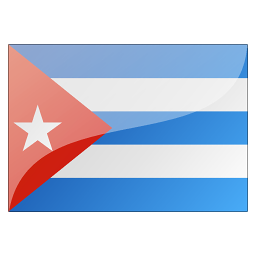



Playa Larga, several kilometers south of Boca de Guamá at the head of the Bahía de Cochinos (Bay of Pigs), was one of two beaches invaded by US-backed exiles on April 17, 1961 (although Playa Girón, 35km further south, saw far bigger landings). Nowadays, it's the best base for exploring the Zapata peninsula, Cuba's largest wilderness area, and is also known for its diving (although Playa Girón makes a better base for the latter activity). There's a cheapish resort here, a scuba-diving center, and a smattering of casas particulares in the adjacent beachside village of Caletón.

A fantasy land of crinkled mountains and exuberant foliage, the Cuban Guantánamo remains a galaxy away from modern America in ambience. That doesn't stop most people associating it with the United States Guantanamo Bay Naval Base, which continues in operation, though downsized. Off the base, the region’s isolated valleys and wild coastal microclimates (arid in the south, lush in the north) are Cuba at its most mysterious and esoteric. Herein lie primitive musical subgenres, little-known Afro-Cuban religious rites, and echoes of an indigenous Taíno culture supposedly wiped out by the Spanish centuries ago – or so you thought.

In this beautiful hill-studded hinterland, Cuba’s contradictions are magnified. For the visitor, there's rich landscapes ranging from the pine-scented mountains of the Sierra Cristal to the palm-fringed beaches around Guardalavaca. Holguín's beauty was first spied by Christopher Columbus who, by most accounts, docked near Gibara in October 1492 where he was met by a group of curious Taíno natives. The Taínos didn’t survive the ensuing Spanish colonization, though fragments of their legacy can be reconstructed in Holguín Province, which contains more pre-Columbian archaeological sites than anywhere else in Cuba.

Drömlika stränder, lyxresorter och djurvård. En udda kombination? Inte på den kubanska ön Cayo Largo där besökare kan följa hotade sköldpaddsarter från ägg till frisläppning.

What is that word hanging in the air over Villa Clara, one of the nation's most diverse provinces? 'Revolution,' perhaps? And not just because Che Guevara liberated its capital, Santa Clara, from Batista's corrupt gambling party to kick-start the Castro brothers' 58-year (and counting) stint in power. Oh, no. Ultra-cultural Santa Clara is guardian of the Cuban avant-garde (having the nation's only drag show and its main rock festival). Meanwhile, the picturesque colonial town of Remedios and the beach-rimmed Cayerías del Norte beyond are experiencing Cuba's most drastic contemporary tourist development.

Few parts of the world get named after yachts, which helps explain why in Granma (christened for the boat that delivered Fidel Castro and his bedraggled revolutionaries ashore to kick-start a guerrilla war in 1956) Cuba's viva la Revolución spirit burns most fiercely. This is the land where José Martí died and where Granma native Carlos Manuel de Céspedes freed his slaves and formally declared Cuban independence for the first time in 1868.

Elegant and old, this relatively hush city spells oasis to the traveler weary of confrontation. Predating both Havana and Santiago, it has been cast for time immemorial as the city that kick-started Cuban independence. Yet self-important it isn't. The ciudad de los coches (city of horsecarts) is an easygoing, slow-paced, trapped-in-time place, where you're more likely to be quoted literature than sold trinkets. Cuba's balmiest provincial capital, it resounds to the clip-clop of hooves; nearly half the population use horses for daily travel.

Lovely Santiago. Far from the capital in Cuba's mountainous 'Oriente' region, this perennial hotbed of rebellion and sedition is Cuba's most 'Caribbean' enclave. The difference is invigorating and sometimes overwhelming. Cultural influences here have often come from the east, imported via Haiti, Jamaica, Barbados and Africa. There's a raucous West Indian–style carnival and a cache of folklórico dance groups that owe as much to French-Haitian culture as they do to Spanish.

Havana's Old Town – the site where the city first took root in 1519 – is one of the historical highlights of Latin America, an architectural masterpiece where fastidiously preserved squares and grandiose palaces sit alongside a living, breathing urban community still emerging from the economic chaos of the 1990s. The overall result is by turns grand and gritty, inspiring and frustrating, commendable and lamentable. No one should leave Cuba without seeing it.

With a name translating as 'massacres,' Matanzas Province conceals an appropriately tumultuous past beneath its modern-day reputation for glam all-inclusive holidays. In the 17th century pillaging pirates ravaged the region's prized north coast, while three centuries later, more invaders grappled ashore in the Bahía de Cochinos (Bay of Pigs) under the dreamy notion that they were about to liberate the nation.